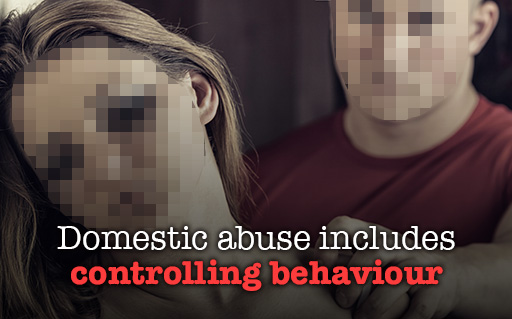3.2 Why is it important to understand domestic abuse?
In the first training module, Introducing domestic abuse, we defined domestic abuse , using the Home Office definition, as being:
“Any incident or pattern of incidents of controlling, coercive or threatening behaviour, violence or abuse between those aged 16 or over who are or have been intimate partners or family members regardless of gender or sexuality. This can encompass, but is not limited to, the following types of abuse: psychological; physical; sexual; financial; emotional.”
We focused on coercive and controlling behaviour, where the perpetrator acts to exert power and control in the relationship through a range of abusive behaviours.
Activity 1
What types of coercive or controlling behaviour have you heard about, either in the first domestic abuse training module or in your volunteering at Support Through Court?
Comment
Controlling behaviour involves the perpetrator removing the survivors’ ability to make choices for themselves and exercise their freedom to act in their personal, social, economic and political life. Examples might include depriving them of money, isolating them from friends and family or making rules about what they can and can’t do in their everyday lives.
Coercive behaviour involves threats, intimidation or humiliation, to harm, punish or frighten the survivor. Examples might include violent outbursts, shouting and swearing, belittling the survivor or threatening the children, to ensure the survivor behaves in the way they want and is frightened and powerless within the relationship.
Sometimes individual acts which make up a pattern of coercive and controlling behaviour can be difficult to identify, particularly for the survivor, who has become used to the behaviour and to the reasons given by the perpetrator for acting in that way. Often these reasons may be about caring for the survivor or looking after them.
In the first domestic abuse training module, introducing Domestic Abuse, we considered how we could use Duluth’s power and control wheel as a way of helping survivors (and those supporting them) to identify the different control tactics perpetrators use against them.
Hover over each segment of the wheel below to display the full definitions.
In the first domestic abuse training module we also explored the losses and gains a survivor experiences when deciding whether to leave the relationship, or restart it. Understanding this can help you to support clients through being non-judgemental, identifying support for survivors and empowering survivors to make appropriate choices.
Activity 2
A difficult and potentially dangerous time for a domestic abuse survivor is where they are brought back into contact with the perpetrator through court proceedings, most typically divorce and financial arrangements or child arrangement proceedings. Why might this be a vulnerable time for a domestic abuse survivor?
Comment
You may have thought of a number of reasons why this time could be particularly dangerous for a domestic abuse survivor. There will be some contact between the survivor and perpetrator due to the court proceedings and they will usually see each other at any court hearings. This may be an opportunity for a perpetrator to try and reconcile with the survivor so the relationship starts again.
You may also recall from the first training module that the perpetrator may also be unsettled by the loss of control in the relationship, particularly where a court makes a decision which the survivor has asked for. This may also provoke a violent response from the perpetrator.
Being aware of the potential risks survivors may face when leaving the relationship or being involved in court proceedings can help you to support both survivors and alleged perpetrators of domestic abuse.
As we work though this module, please remember the importance of understanding what domestic abuse is, the control tactics perpetrators use, why survivors might find it difficult to leave a relationship and the risks involved in court proceedings where domestic abuse is involved. This will help you to better support both survivors and alleged perpetrators. We will look at how to support alleged perpetrators in the next section of this module.
3.1 Introduction

